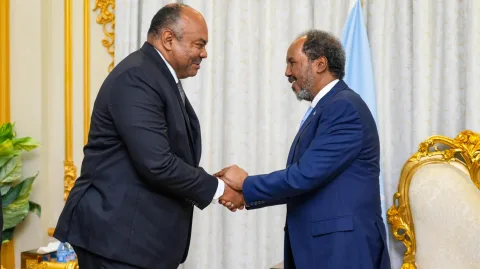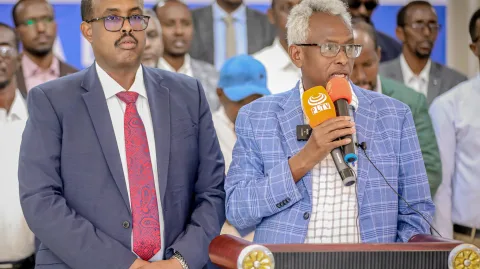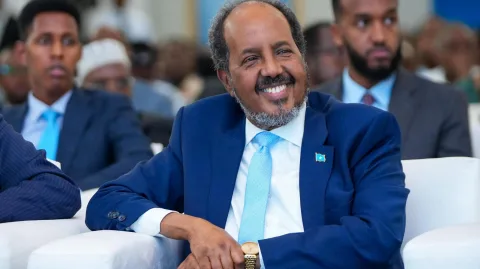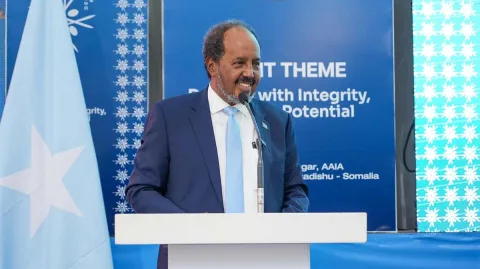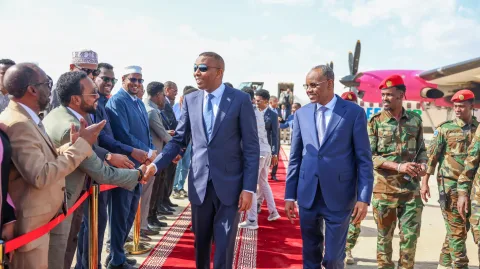A city with an immense zest for life which has been serenely casting itself not only…
By Cusman Cumar
cusmaancumar@gmail.com
A city with an immense zest for life which has been serenely casting itself not only as one of Somalia’s most dynamic and cosmopolitan cities but also a magnet for rural and urban population in the country.

I have been to Mogadishu, to Kismayo, to Hargeysa, to Bosaso, to Berbera, Burco and Lascaanood – all vivacious and vibrant places but Garowe seems to be a bustling, and lively city with a zest for life and ambition but relatively quite expensive.
Squally but far much cooler and limpid reasonably to the Gu’ season weather. Now it is July. Many Puntland towns are above 30C°. Quite warm or sometimes hot. Here humidity is low comparative to Bosaso which could be near 100% and very hot.
It was in the afternoon when I arrived Garowe, the capital city of Puntland state of Somalia. Few people were out and about. Siesta is common here just like any other place in Somalia. Every day right after lunch, everyone shelters from the sweltering heat of the afternoon sun. The city wakes up again just during the afternoon prayers.
It is Friday Asr time, and there are tuk-tuk, minibuses, children, idling goats, and Khatwala women selling the Khat. Men, women, children, beggars, hawkers, fill some of the main streets of Garowe. Traffic on the city centre’s main road is often anarchic and quite terrible but one can easily notice how organised this chaos is. Honking is very common. It is a means of communication. Motorists vent their frustrations, or greet friends, fellow drivers, pedestrians, or just for the sake of honking.
Most of the houses are newly built. Villas, bungalows, few mansions, simple houses, tall houses, stone houses, government building, colleges and universities, etc. The fresh paints bathed on most of all these buildings indicate that they are not even a decade old. This relatively well-mastered town plan is missing the most essential and a must for a city with its standard – a park. With daily temperatures hovering above 25 degrees most of the time, gardens, greenery with eucalyptus and acacia trees can be an oasis in this concrete and corrugated iron roof jungle.
Just before dusk, it is a tradition for many Garowe families to stroll and visit families and relatives or dine out, a custom dating back many years. Elegant and beautiful women with charming oval faces and fine large dark eyes, with ebony tint skin and slender figures come out to the city. Their sartorial splendour completes their magnificence and refinement. The scents of Uunsi, a local aromatic fragrance and perfume, waft through the air from their directions. Their perfect grace and breeding walks resemble that of Hatshepsut in the Temple of Karnak and Deir el Bahri (1). The pharaoh queen would have had received many cosmetic adornment tips from the foremothers of these women in Puntland, the foremost of noble ladies. I gazed at some of them passing by and was enthralled by their exquisite femininity with an air of superiority about them. I felt that I was completely transported to that era of Hatshepsut and Nefertiti (2) only to be woken up by the tooting of a Toyota car. I came out of my trance and found out that the driver did blast his honk for no reason.
The environs of the city are the grazing valleys and flat plains for camels, goats and sheep for not only the region of Nugaal but often a congregational pastureland for the livestock of the whole northern provinces of Somalia. Nugaal low land is known throughout history for its bounty pastures, mineral rich water essential for livestock, and flat windy plains devoid of any predators and pests. Milk and meat of the camels, goats and sheep in Nugaal valley could be certified as purely organic products. Hardly any pesticides or any antibiotics and growth hormones are injected into or given to these animals. Milk from these flat plains and Nugaal valley grazing areas tastes smoother and creamier with thirsty-quenching flavour. The meat, especially camel meat, is very lean and gamey. This is due to camels eating a lot of browse. The vegetation is of different species of shrubs, acacias and many other endemic plants. The flora is unique, and aromatic during rainy months.
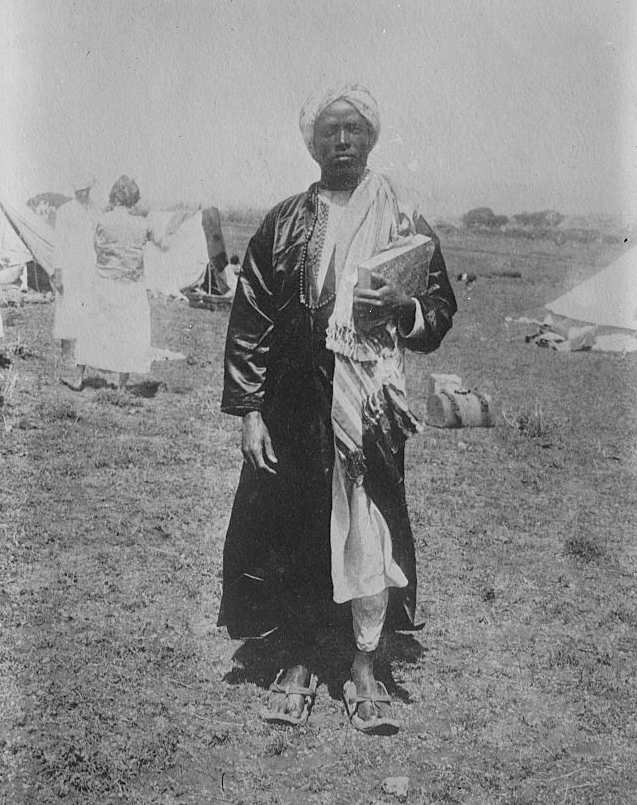
Although there are very few significant historical landmarks, the city is renowned for giving the names of the region’s prominent historical statespersons to mosques, roads, hospitals and sports fields. A good example is the mosque of Sheekh Cali CabdiRaxmaan aka Sheekh Cali Majeerteen – one of the main mosques in the Garowe.
Sheekh Cali CabdiRaxmaan Fiqi Khayre (1787 – 1852) was a well-known Somali poet and mufti. As young man, the Sheekh completed his Haj obligation and then travelled through many towns and cities in the Arabian peninsula in his endeavour to expand his knowledge of Islamic jurisprudence. When Sheekh Cali returned to Somalia he moved to Shabeelle regions of Somalia in order to propagate his reformist version of the religion. In his era, he was among a small group of Somali literary elite renowned for their eloquence in Somali and Arabic. The Sheekh’s poems are well known for their religiosity and call for piety and puritanism. His shrine is now in Cagaaran, Marka.
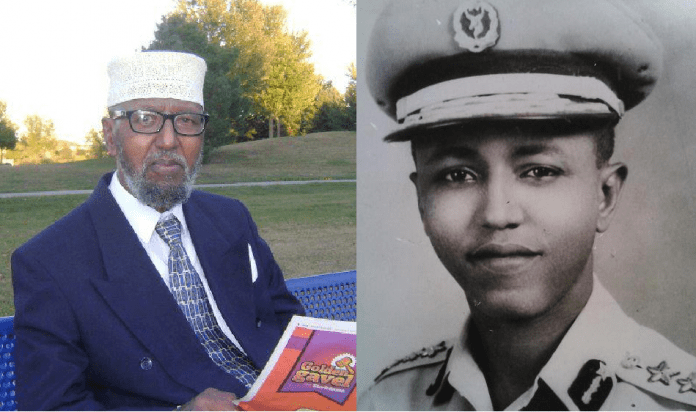
Another high-ranking statesperson from Garowe is General Maxamed Abshir Muuse (1926 – 2017), head of the Somali police force right from independence until the military coup of 1969. On the tutelage of General Abshir, the nascent Somali police force started to deliver services effectively and efficiently – incorruptible, and became a well-trained force within few years. Very low crime rate in Somalia was the result of General Abshir’s famous pro-active policing approaches introduced in Somalia during that era. The newly built airport in the outskirts of the city is named after the General.
Because of its strategic location connecting South Central regions and Northern territories with the coastal areas of the Indian Ocean and the Red Sea, Garowe is fast developing into an engine of economic growth. It has already shown its capability in being a platform for diversity and political dialogue for the Somali nation. A thriving medium-sized cities like Garowe could be the future capitals of nations emerging from conflicts and civil wars.
(1) Two of the most beautiful temples in Egypt erected during Hatshepsut’s rule. The walls of Deir el Bahri were illustrated with a colourful account of the trading expedition to Puntland.
(2)Egyptian queen (1370 – 1330 BC.) and royal wife of Akhenaten, an Egyptian king
This post reflects the opinions of the author and not necessarily those of Horseed Media as a publication.
